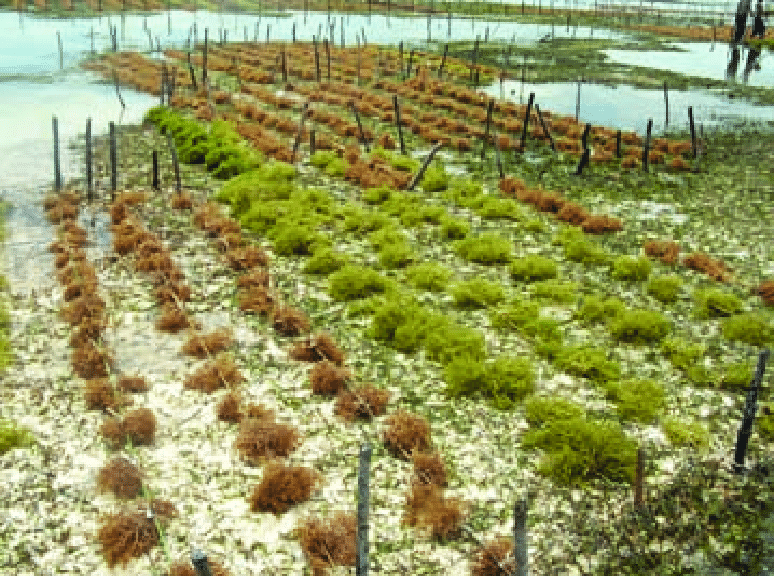Restoring forests is often viewed through a lens of trade-offs, where the potential benefits must be weighed against the possible costs or conflicts. This perspective arises because forest restoration can involve significant changes in land use, which may impact various stakeholders differently. For instance, converting agricultural land back to forest can benefit biodiversity by providing habitat for wildlife and improving ecosystem services. However, it might also affect local farmers who rely on that land for their livelihoods. Similarly, reforestation projects may require substantial investments and resources, raising concerns about economic viability and competing land uses.
Despite these trade-offs, integrated restoration plans offer a compelling approach that can harmonize the needs of both humans and biodiversity. By adopting a holistic strategy that considers ecological, social, and economic factors, restoration initiatives can achieve multiple objectives simultaneously. For example, creating buffer zones around protected areas can enhance biodiversity conservation while providing sustainable resources and economic opportunities for local communities. Integrating agroforestry practices, which combine tree planting with agricultural production, can also offer a win-win solution by improving soil health and biodiversity while supporting food security and farmer incomes.
An integrated plan for forest restoration involves collaborative efforts from various stakeholders, including governments, local communities, NGOs, and private sector actors. Such collaboration ensures that restoration activities are designed to meet the needs and priorities of all involved parties. This approach can lead to more resilient ecosystems, increased carbon sequestration, and enhanced ecosystem services, such as water regulation and soil conservation. Additionally, involving local communities in decision-making and implementation helps to align restoration goals with their traditional knowledge and practices, thereby increasing the likelihood of successful and sustainable outcomes.
Forest restoration can benefit humans, boost biodiversity and help tackle climate change simultaneously, new research suggests.
Restoring forests is often seen in terms of “trade-offs” – meaning it often focuses on a specific goal such as capturing carbon, nurturing nature or supporting human livelihoods.
The new study, by the universities of Exeter and Oxford, found that restoration plans aimed at a single goal tend not to deliver the others.
However, “integrated” plans would deliver over 80% of the benefits in all three areas at once.
It also found that socioeconomically disadvantaged groups would benefit disproportionately from this approach.
The researchers used a framework called Nature’s Contribution to People (NCP), which emphasises a holistic relationship between restoration and benefits to humanity, including equity.
It applied this to large areas of India, examining the benefits of natural regeneration of native forest in suitable places that aren’t currently forest.
“Restoration projects sometimes have a narrow focus, which can lead to trade-offs,” said Dr Trisha Gopalakrishna, from the University of Exeter and formerly at Oxford.
“For example, if you focus on carbon storage, you might plant particular tree species and fence the forests off to protect them.
“If you focus on biodiversity, you might manage forests for particular species, like the emblematic Bengal tiger or Asiatic elephant.
“If you focus on human livelihoods, you might plant species that provide housing materials and fuelwood for cooking.
“The philosophy you choose would dictate your choices.
“Unsurprisingly, our study shows that plans with one NCP in mind tend not to deliver the others.
“However, we were surprised and pleased to find that an ‘integrated’ plan can deliver all three remarkably efficiently.”
The researchers used an optimisation algorithm to generate maps of 3.88 million hectares of possible forest restoration area, avoiding areas such as grasslands and agricultural land.
The results showed that integrated forest restoration plans (aimed at multiple goals) deliver on average 83.3% of climate change mitigation NCP, 89.9% of biodiversity value NCP and 93.9% of societal NCP delivered by single-objective plans.
Commenting on why this happens, Dr Gopalakrishna said: “Integrated plans create a multifunctional landscape, with connectivity so people and animals can thrive.”
The findings show that 38-41% of the people impacted by integrated spatial plans belong to socioeconomically disadvantaged groups, greater than their overall representation in India’s population.
Dr Gopalakrishna added: “Many countries, like India, have committed to very big goals on climate and the environment.
“The blueprint we have developed provides an approach to design conservation policies, specifically ecosystem restoration activities.
“It would be useful to know if our findings hold true in other countries using different types of ecosystem restoration plans and focused on different benefits.”




